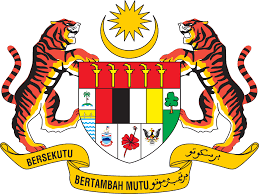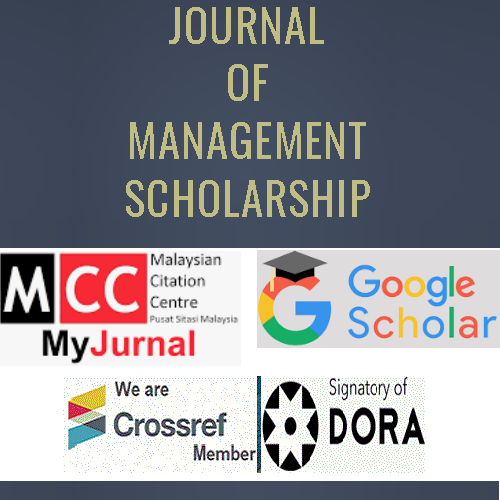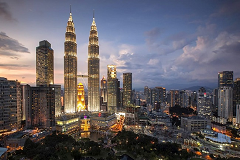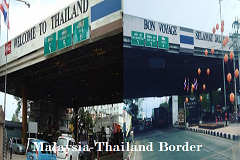Difficulties and Challenges Faced by Female Drivers in Malaysia
- On Jul, 2, 2021
- Ch. Mahmood Anwar
Driving, whether on a comfort car, luxury car or a weather-beaten truck can provide utility depending on the user’s needs. The human nature is such that a balance ought to be obtained between satisfaction of needs and the budgetary constraint involved. From an economic perspective, individuals tend to behave rationally in order to maximise benefits received from consuming market goods and services while minimising the incurred costs.
These choices coupled with the road infrastructure available, are some of the key aspects that bring to light the challenges experienced by drivers and in this context female drivers. Cultural dispositions and the social norms in place also have a heavy hand in shaping such phenomena. Other factors include road safety, government protocols put in place to provide a guideline on driving ethics and the issue of licensing.

This article sought to shad light on the difficulties and challenges faced by female drivers in Malaysia. Malaysia is a multicultural, multiethnic country, with a rich cultural heritage and religious diversity. Diversity has long been the hallmark of the region, home to substantial Muslim, Buddhist, Christian, Hindu, Taoist, and animist communities with an array of ethno-linguistic identities. This information is important in providing insight on the position and identity of women in the society. The root of most difficulties faced by women engaged in driving activities either daily or on occasion arise from the above mentioned issues.
Malaysian Road Network
Malaysia’s road network is extensive, covering 250,023 km, including 1,956 kms of expressways (as per 2019 figures). The main highway of the country extends over 800 km, connecting the Thai border from Singapore. The network of roads in Peninsular Malaysia is of high quality, whilst the road system in East Malaysia is underdeveloped.
Taking these facts into consideration, the advancement in road development is commendable but still wanting, especially in East Malaysia where the roads are dilapidated and in poor condition providing a challenge for female drivers there. The poor road condition could in fact be a catalyst for accidents and damage to vehicles. On average it is expected that the lifecycle of cars driven in the East Malaysia to be half that of Peninsular Malaysia.
Another issue is the rising traffic jams that come as a result of increase in road users in line with the increase in population. There has been an increase in population from 10.4 million in 1974 to 32.8 million in 2021 at an average growth rate of 2.1% per annum. The total numbers of registered vehicles also increased from 3,447,712 in 1996 to 17,486,589 vehicles in 2020.
The above indicators provide insight into the problems arising from increase in population and motor vehicle numbers, which includes traffic jams and accidents as discussed further in the article. The article utilized secondary sources of information to obtain relevant information on the topic. Previous works related to the topic and statistical data from the responsible departments proved to be sufficient.
Traffic Congestion
The issue of traffic congestion is a common one among different countries, especially in major cities. Traffic congestion can be frustrating in terms of time wastage, reduced efficiency in a business perspective, since supply of goods and raw materials are often delayed. Female drivers are amongst those affected, either as workers heading to the office, mothers driving kids to school or heading for a shopping spree.
According to a report published by The World Bank (Malaysia Economic Monitor, June 2015 - Transforming Urban Transport), working class Malaysians are estimated to waste about 1 million hours annually due to traffic congestions. This is crucial time wasted, time that could have been utilized in other profitable activities, the cost of which is ideally referred to as the “opportunity cost” by economists.
Traffic congestion is also a major contributor to air pollution, considering the numerous cars not moving with engines revving and clouds of carbon dioxide being emitted from their exhaust pipes. This can have mitigations on the health of drivers caught in the congestion.
Cost of fuel is expected to be high as more time is spent on the road though without moving but with a running engine. This in turn makes the average cost of car usage in the long-run to exceed the initial plan by the owner. It was estimated that in 2015, the combined air pollutant emission load accumulated to 2,001,195 metric tons of Carbon Monoxide (CO), 835,927 metric tons of Nitrogen Dioxide (NO2), and 23,904 metric tonnes of Particulate Matter (PM). Emission load for CO had increased in 2015 compared to 2014 due to high consumptions of fuel oil.
Increased Road Accidents
Every female driver in Malaysia will be taking to the road everyday with the threat of accidents ringing loudly at the back of their minds. Road accidents are not a rarity in the Malaysian context but a very common occurrence. Different reasons can be cited as major contributors of accidents, including, poor road conditions, reckless driving, traffic composition, and high traffic volume.
According to a publication by The Star, Malaysia has the third highest fatality rate from road traffic accidents in Asia and ASEAN region, behind Thailand and Vietnam. These fatality rates are similar to that of some African countries. By comparison, the fatality rates in developed countries are all in single digits. Transport accidents (5.4%) were the fourth most common cause of death in Malaysia in 2016, behind ischaemic heart disease (13.2%), pneumonia (12.5%), and cerebrovascular disease (6.9%). It was the third most common cause of death among men behind ischaemic heart disease and pneumonia, according to the Department of Statistics.
Poor Road Conditions
Most of the roads are in a sorry state in Malaysia, ridden with potholes, poor street lighting, lack of road signs, and the drainage system is appalling. Chief Minister Datuk Seri Hajiji Haji Noor said that, in 2021, the Ministry of Works (KKR) is expected to be allocated a fund of RM 292.75 million for new constructions, maintenance, restoration and upgradation of roads, damaged slope repairs, construction and repair of bridges, buildings as well as the State Government-owned assets including rental and other services. He also said “Sabah Sewerage Services Department (JPP) will be allocated RM 57.75m. A total of RM 124.2m under Ministry of Finance is allocated for Road Maintenance, Water Supply, and Sewerage Trust Fund”. It seems that either the provided funds by the government are not sufficient or the utilization of funds is not effective to alleviate the issue of poor road conditions.
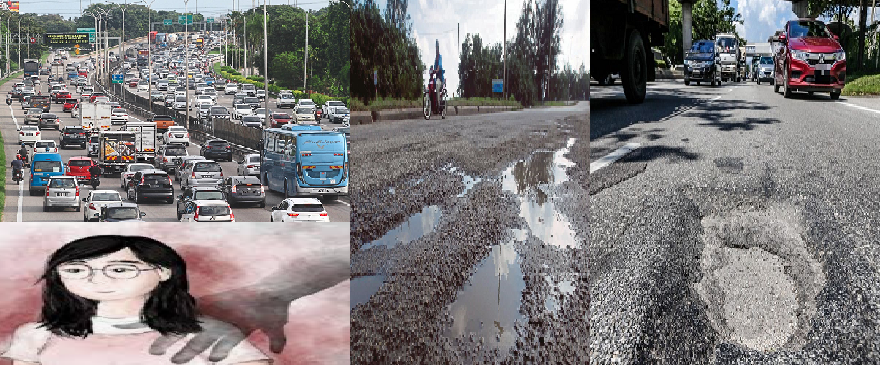
Traffic Composition
The prospect of driving in a road with a mix of different types of motorists is never enticing for any female driver. The menace caused by motorcycle riders, trucks, bicycles, bajaj and other types of motorists, when operating in a single road cannot be underestimated. One to note is the motorcyclists who are notorious for not adhering to traffic rules. The ability of a motorcycle to maneuver its way through tight spaces makes them carefree in the process increasing the risk of accidents.
Road accident statistics shows that in 2019, casualties from motorcycle accident constitute 64% (3964.88) of all traffic accidents casualties (6167) in Malaysia . The lack of separation between small, medium, and large vehicles is unfortunately a recipe for disaster, the mere imagination of a truck overtaking another truck in a congested road is gut wrenching. This provides female drivers with a challenge whereby not only do they have to mind their driving, but also the other driver.
High Traffic Volume
An increase in the volume of traffic on the roads has been problematic and challenging for drivers in Malaysia. This has also increased volume of accidents recorded. A study concluded that an accident along sections with the average daily traffic (ADT) of above 30,000 is about 47% higher than ADT less than 30,000 . This results in a scenario whereby there are no spaces to overtake or switch lanes, and any attempt to force an overtake could be risky.
The Cultural and Social Aspect
Since time immemorial women have been given a rather reserved role in society; that is staying at home to cook, tend the house and taking care of the children. There was a domestic role before, but times have changed considerably with women taking more active roles including being income earners. As such the need for women to acquire driving skills has seen an increase in female drivers. They drive themselves to work, shopping, and others even work as truck drivers.
However, this transition has not been without its detractors as some still see it rather odd for a woman to assume such roles as driving themselves. Increase in female drivers can be attributed to the increase in female workers. In Malaysia, by the year 2000, there have been a rising trend in working women. The increase of women in labour force has increased from 53.5% in year 2017 to 55.6% in year 2019. It may be of note that the emotional nature of women makes them vulnerable and thus some may feel they are unsuitable for rigorous activities including driving.
Conclusion and Recommendations
The challenges and difficulties discussed in the article faced by female drivers in Malaysia can also be generalized to all drivers in Malaysia. However, some, like the cultural aspect, are specific to female drivers. As detailed the increase in female workers in Malaysia has contributed immensely to the increase in female car ownership thus an increase in female drivers, which is a positive step. Malaysian society needs to embrace this change as the world is moving in that direction.
The Government needs to invest more on road infrastructure, to safeguard against accidents resulting from poor roads, congestion and traffic composition. Stricter legislations on basic driving training and licensing should be put in place to ensure only qualified drivers take to the road. Traffic violators should be heavily fined or prosecuted to put a mark and ensure every driver is conscious about the road safety matters. The plight of female drivers is one that may take time to address but with necessary steps put in place it is possible to alleviate some of the issues.
Female drivers are much appreciated to express their thoughts in comments section.

